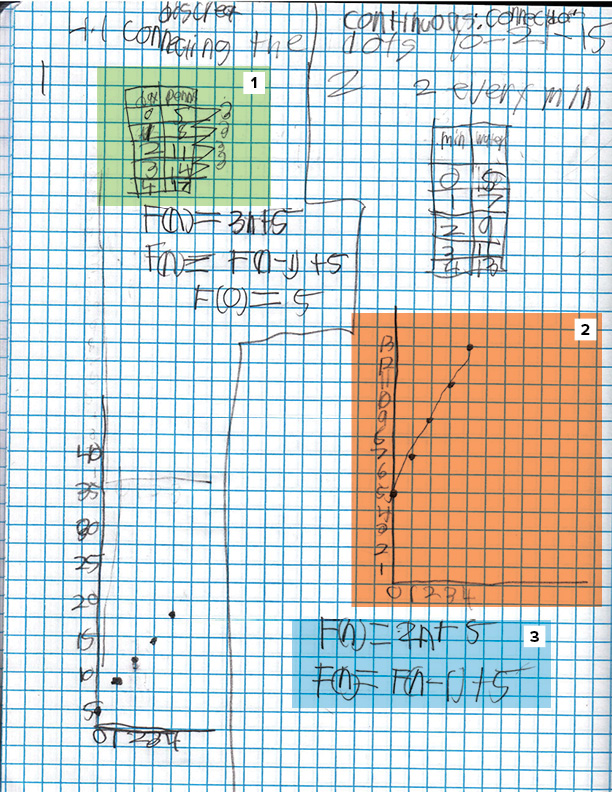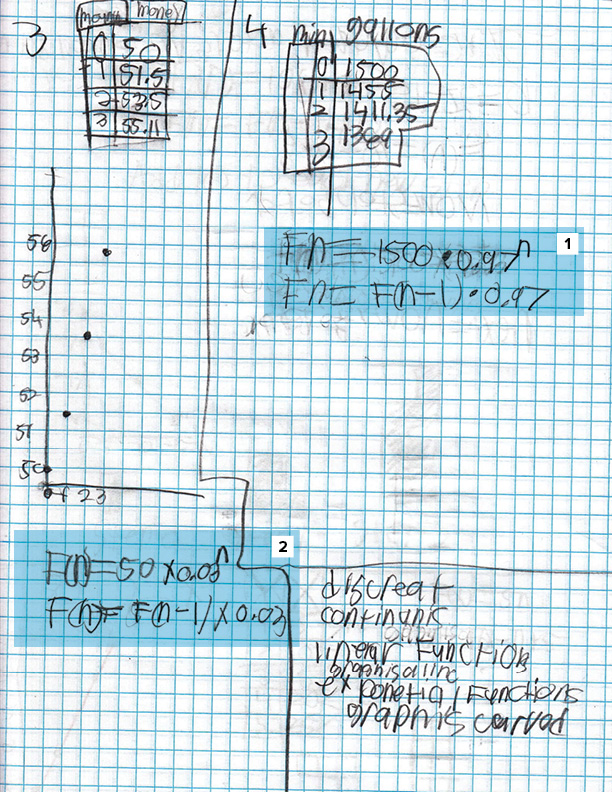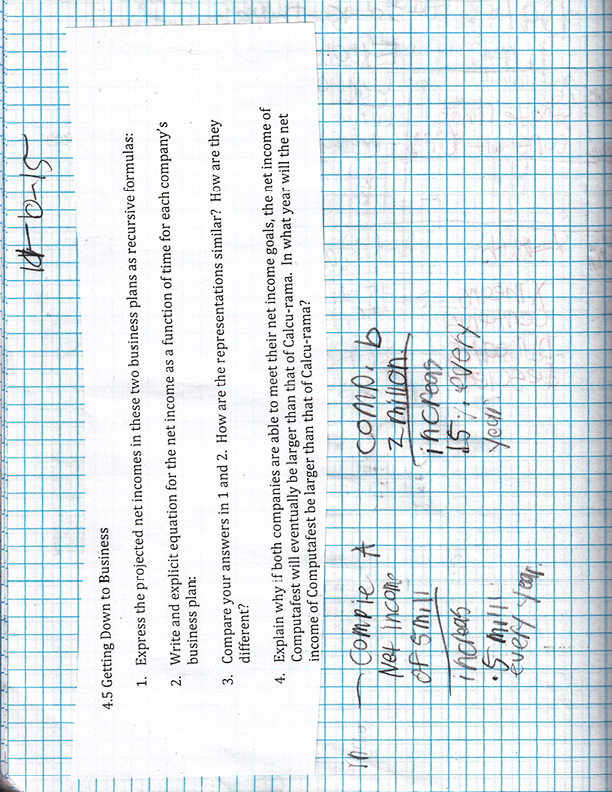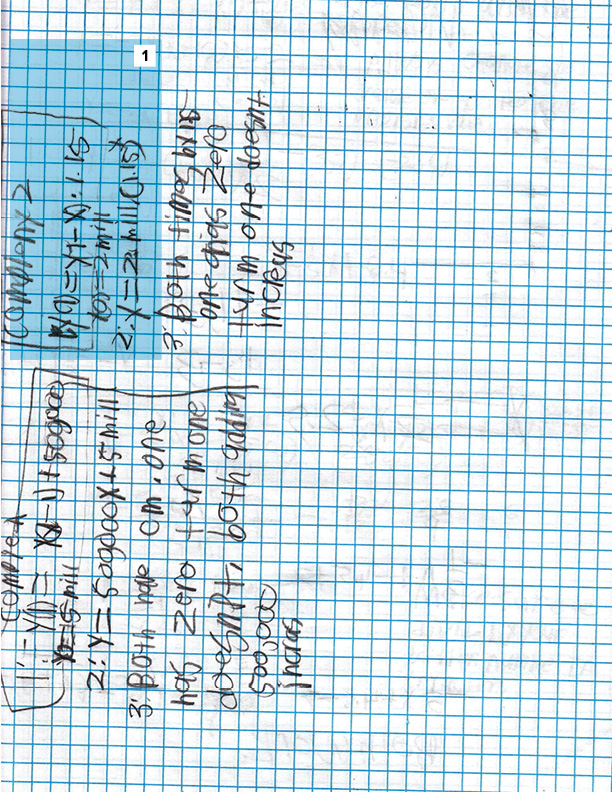All students should graduate from high school ready for college, careers, and citizenship.


NOTE:
This sample of student work was selected from a special education classroom.
1. Understanding
Why is the student showing the common difference in the table for question 1, but not for the equation in question 2? Is this because the student is thinking about issues of discrete vs. continuous or did the student just ignore this? The graph is modeled with a connected line in #2, but not #1, indicating that there is some thinking about discrete versus continuous situations.
2. Comprehension & Application
SMP.7: Look for and make use of structure.
The student is attending to structure by connecting the dots on continuous functions, and perhaps by choosing not to identify common factors or differences on tables that modeled continuous situations.
3. CCSS Alignment
The student is approaching proficiency in HSF-LE.A.2. The student uses the initial value as the constant difference in the recursive equations for both linear situations.
Standard referenced:
HSF-LE.A.2: Construct linear and exponential functions, including arithmetic and geometric sequences, given a graph, a description of a relationship, or two input-output pairs (include reading these from a table).

1. CCSS Alignment
The student is distinguishing between exponential and linear situations, as shown by the equations the student writes for each situation.
Standard referenced:
HSF-LE.A.1: Distinguish between situations that can be modeled with linear functions and with exponential functions.
2. CCSS Alignment
The student is approaching proficiency in HSF-LE.A.2. The student does not use the correct growth factor in question 3, using .03 instead of 1.03, even though the student has correctly calculated the values in the table.
Standard referenced:
HSF-LE.A.2: Construct linear and exponential functions, including arithmetic and geometric sequences, given a graph, a description of a relationship, or two input-output pairs (include reading these from a table).


CCSS Alignment
(Entire page)
The student is approaching proficiency in HSF-LE.A.2 with writing recursive and explicit equations. The notation for recursive equations needs work. Explicit equations are correct.
Standard referenced:
HSF-LE.A.2: Construct linear and exponential functions, including arithmetic and geometric sequences, given a graph, a description of a relationship, or two input-output pairs (include reading these from a table).
The student has correctly worked with the parameters in the recursive and explicit equations.
Standard referenced:
HSF-LE.B.5: Interpret the parameters in a linear or exponential function in terms of a context.
There is no evidence for standard HSF-LE.A.3 in the work since the student didn’t discuss why Computafest’s plan is better.
Standard referenced:
HSF-LE.A.3: Observe using graphs and tables that a quantity increasing exponentially eventually exceeds a quantity increasing linearly, quadratically, or (more generally) as a polynomial function.
Comprehension & Application
(Entire page)
SMP.7: Look for and make use of structure.
The student understands the structure of explicit and recursive equations, and is able to create these equations without the support of a table.
1. CCSS Alignment
The student correctly uses the percent change in the explicit and recursive equations.
Standard referenced:
HSF-LE.A.1c: Recognize situations in which a quantity grows or decays by a constant percent rate per unit interval relative to another.
